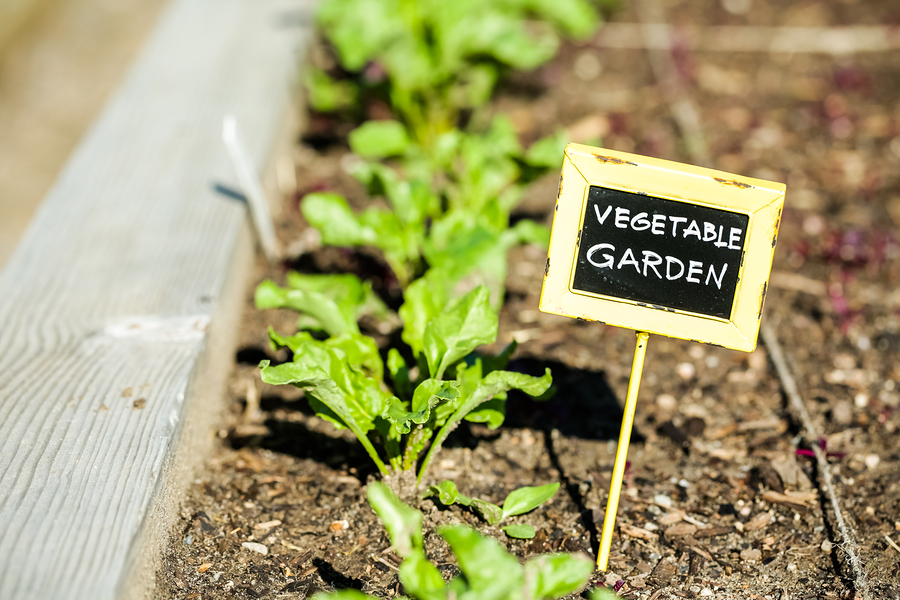Growing your own food gives you access to fresh, safe, chemical-free, fruits and vegetables year-round. But not only is it the organic care you give your plants that ensures they are safe to eat: how you house them can ensure a healthy food source or a chemically laden one. These four types of garden beds listed below can potentially wreak havoc on your health and the health of your family, so avoid them at all costs.
Pressure Treated Wood: Gardeners have unknowingly been using pressure-treated wood for their raised garden beds for decades. But in 2003, after the EPA banned lumber treated wood with CCA to be sold for residential use, gardeners became concerned about the health risks of using any type of treated wood for their garden beds.
Arsenic from treated wood has been found to leach into the soil and contaminate plants. Though new and improved pressure treated wood products hit the market every year, we can’t be certain of their safety. Safe alternatives are non-treated decay-resistant woods and heartwoods vs sapwoods.
Galvanized Steel Siding: This material is still up for debate between gardeners, but many who are familiar with galvanized steel insist that there is a strong chance that zinc can leach into the garden soil and become harmful to whoever ingests the fruit and vegetables grown in the raised steel bed.
Though the seriousness of the effects of using galvanized steel for raised garden beds is still somewhat of an unknown, the concern is clear.
Cinder Blocks: Raised block beds are certainly Pinterest-worthy and have become very popular; however what many people don’t know is that they are putting their health at risk by using these blocks (or any concrete for that matter) to build raised beds for their fruits and vegetables.
Heavy metal poisoning from Fly Ash may threaten the integrity of an organic garden. As these toxins make their way into the soil they then reach the plants themselves and have the potential to become a significant health risk. It is suggested that such risks can include cancer and negative impacts on the nervous system.
Repurposed Wood: Repurposing wood materials, such as railroad ties, for raised beds makes for a unique garden, but there are risks to using materials whose history is unknown. Repurposed wood, for instance, could have been chemically treated, painted, stained and bug-bombed.
If wood that has been chemically treated in any way is used for a fruit and vegetable garden your health can be put at risk. These chemicals (even those found in paints and stains) will leach into the soil that your food is growing in and in turn end up on your dinner plate.
What is the safest choice for raised garden beds? As mentioned above, choose non-treated decay-resistant woods and heartwoods vs sapwoods.

I was under the impression that pressure treated wood these days were salt impregnated.
Wood is pressure treated in a variety of ways. There are a number of different (chemical) preservatives and processes that are used including micronized copper preservatives and co-biocide. The preservation process can deem the wood as an Environmentally Preferable Product (EPP) by Scientific Certification Systems (SCS), but being “environmentally preferable” is sadly far from being environmentally friendly or safe for growing food.
I’m just wondering what materials ARE good for raised beds? I was disabled in an accident last summer and can’t get down on the ground anymore but still want to have an herb and vegetable garden. What would be something to use that isn’t expensive?
So sorry to hear that Kina. Raised beds will definitely help. Opt for untreated wood. Redwood or Black Locust will last the longest, but Cedar and Douglas Fir will also last you a good long while.
Thanks!
Why not just line the inside walls with heavy grade plastic liner?
The toxicity of BPA would be a concern. Like the chemicals used to pressure treat wood, BPA would likely leach into the soil and contaminate the plants. Here is a great bit of information on BPA http://www.niehs.nih.gov/health/assets/docs_a_e/bisphenol_a_bpa_508.pdf